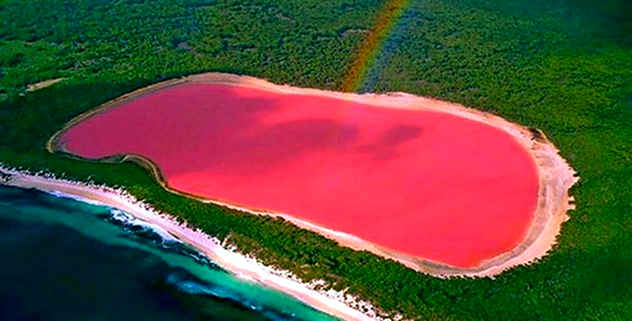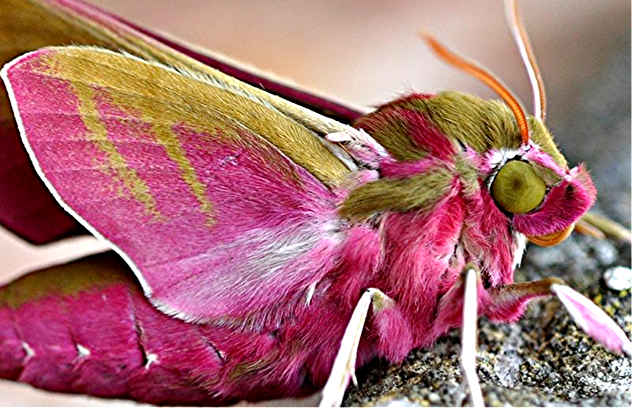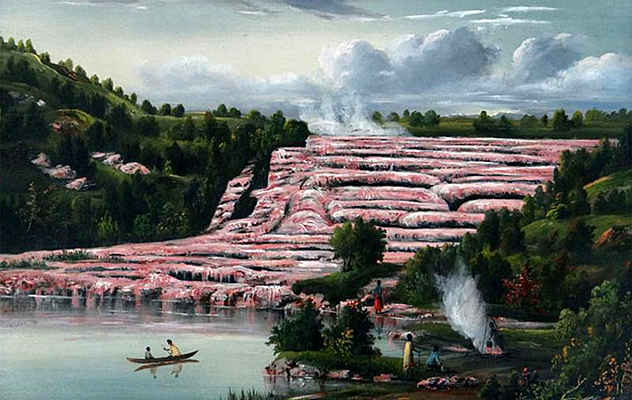6 Lake Hillier, Australia

Australia’s Lake Hillier appears from above to have been covered in numerous vats of Pepto Bismal. It’s an eerily pink color. The algae that gives it its color—the salt-loving Dunaliella microbe—is the same as that which can be found in San Francisco’s salt ponds. The reddish-pink hue is a result of pigment components that make it exceptionally effective at absorbing sunlight.
Other algae and microorganisms that have contributed to the intensification of Lake Hillier’s pink hue have been discovered by scientists. The extra microorganisms are proof that the lake had a leather tanning plant in the early 1900s, and these discoveries also hint to the cause of the lake’s colour.
The lake’s hue is exceptionally vivid as a result of human activity, making this specific specimen half natural and half man-made.
5 Elephant Hawk Moth

This species is intriguing from caterpillar to fully grown moth. Its name is derived from the caterpillar’s appearance, which resembles an elephant trunk due to its thinner head and thorax than the rest of its body.
However, it has evolved, like many moth caterpillars, to pass for a snake, complete with eyes, in order to deceive prospective predators into staying away. Even better, the caterpillars have a protrusion on their head called an anal horn that can palpitate quickly to resemble an eye blinking.
One of the world’s most beautiful species of moths, and undoubtedly one of the most distinctive moths in its home United Kingdom, will emerge from the caterpillar if it manages to live through to the cocoon stage. The Elephant Hawk Moth is pink and olive in color, in contrast to many other moth species, which are normally gray or brown. They are sometimes mistaken for a pink butterfly, although they are actually nocturnal moths with thick, fuzzy bodies.
4 Pink Terraces of Lake Rotomahana

You can’t see this pink natural treasure right now since it is submerged and hidden from view. The 1886 earthquake off the coast of New Zealand was assumed to have destroyed all of the terraces. The pink and white terraces were a natural marvel that New Zealanders cherished. Some even referred to them as the world’s eighth wonder. The two greatest formations of fine quartz on earth, they were absolutely unique. One terrace outcrop was white, whereas the other was pink because of an unknown chemical impurity.
A mapping and research mission to Lake Rotomahana’s floor occurs 150 years later.
Using sonar to study the lake surface, researchers found what they believed to be the pink terrace’s vanished protrusion. To be sure, they dispatched a crew with underwater cameras, and they were able to ascertain that there were still little remnants of both the white and pink terraces.
The 1886 earthquake significantly reduced the terraces’ size to less than 10% of what it had been, but New Zealanders may take solace in the fact that these natural treasures are still accessible to tourists.








